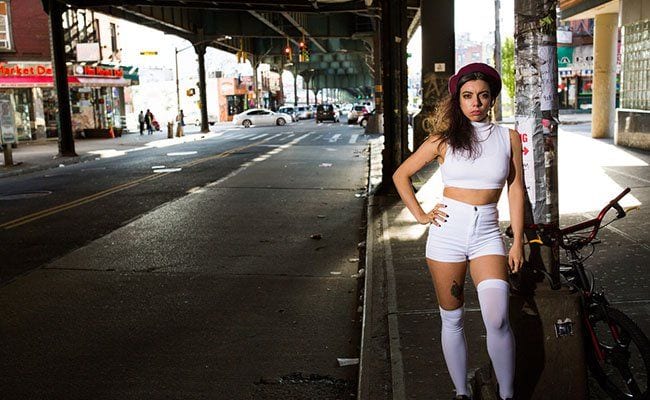
Bronx native Alyndra Segarra is best known as a New Orleans based musician thanks to her work with the Crescent City band Hurray for the Riff Raff. This time, she leads the combo back to her Nuyorican roots. Segarra literally serves as The Navigator on this 12 track journey into the past where memory, poetry, myth, and reality mix to create a rich, spicy and hearty guisada.
This is not a nostalgia trip, mis amigos, but a tale told with an analytical and imaginative eye. Segarra knows her history. She describes urban living and personal ambitions with equal felicity and an eye for the telling of details. The songs’ narrator invokes references to the disparate elements of one’s life where access to a library and the radio provide as much background as one’s family and neighborhood. She weaves together references to Carson McCullers and Anne Morrow Lindbergh with he Doors and John Lennon as well as with the sayings of her friends and family, Puerto Rican poet Pedro Pitri, and the nationalist newspaper of the Young Lords, Pa’lante.
Musically, The Navigator greatly differs from previous Hurray for the Riff Raff albums because of its Latin backbeats, thanks to percussionists Juan-Carlos Chaurand and drummer Gregory Rogove. They keep the energy moving. The rhythms never let up, no matter how intimate the material, suggesting the pulsating cadences of city life. Segarra and co-producer Paul Butler introduce the album with the sounds of traffic and a gospel choir and end it with an acoustic son canción) sung half in English, half in Spanish to suggest how far one has traveled while never really leaving the block. This has been a spiritual trek and all the motion has just been dancing in one’s head, so to speak.
Life may have been tough growing up in the barrios of the Bronx, but it was teeming with soul. Segarra notes that living in the dark apartment on the 14th floor can be demoralizing but the stairwells and the roof can provide havens for the heart. Compassion, empathy, and sensitivity will always find a way to exist and grow in the margins. Moonlight and a bottle can function as well as the Bible for one looking for salvation.
And the narrator / navigator of Segarra’s song cycle is an optimist as well as a realist. On “Halfway There” she sings as quietly as one crooning a lullaby to a baby about the deceptions of life: “Walk down the street hold my head held high / Everywhere I go someone tells me a lie / a lie / a lie / a lie”. But rather than accept the false narrative, the song ends with the narrator happily noting that being midway to one’s destination means progress has been made. The ditty works as an ode to hope for the future.
We are wholly independent, with no corporate backers.
Simply whitelisting PopMatters is a show of support.
Thank you.
The title track concerns the double-edged sword of urban renewal. The neighborhood may improve in terms of crime reduction and structural improvements, but that also means the old population who can no longer afford to live there have to move elsewhere. The qualities that initially made the place special get replaced by a more antiseptic and generic culture. The narrator refers to President Trump’s building a wall as a metaphor for gentrification. Beware of what you keep out. It has more value over that which you wall in.
The central theme of The Navigator concerns believing in oneself and helping others. It’s a simple message, but a difficult one to maneuver in this world that can act to diminish one’s value as a person — especially if one does not have money or belongs to a minority group whose family life may not match traditional norms. Hurray for the Riff Raff’s music inspires one to look inward and find strength and to enjoy life in the process. No matter how forbidding the times may seem, remember we are all in this together. We can still sing and dance, even if it is by oneself in the dark, and we will never be truly alone.

